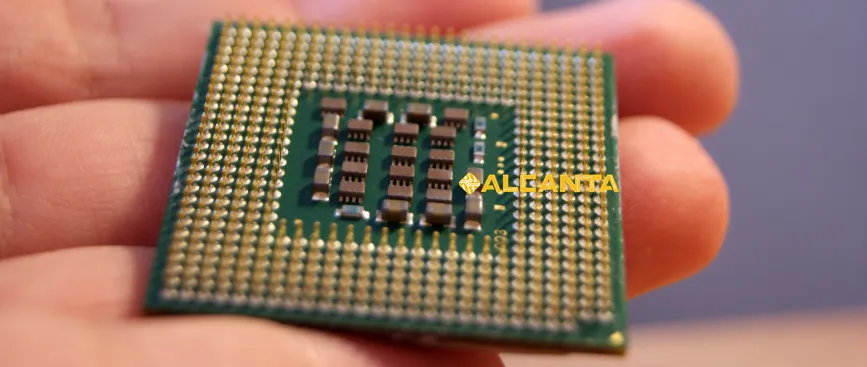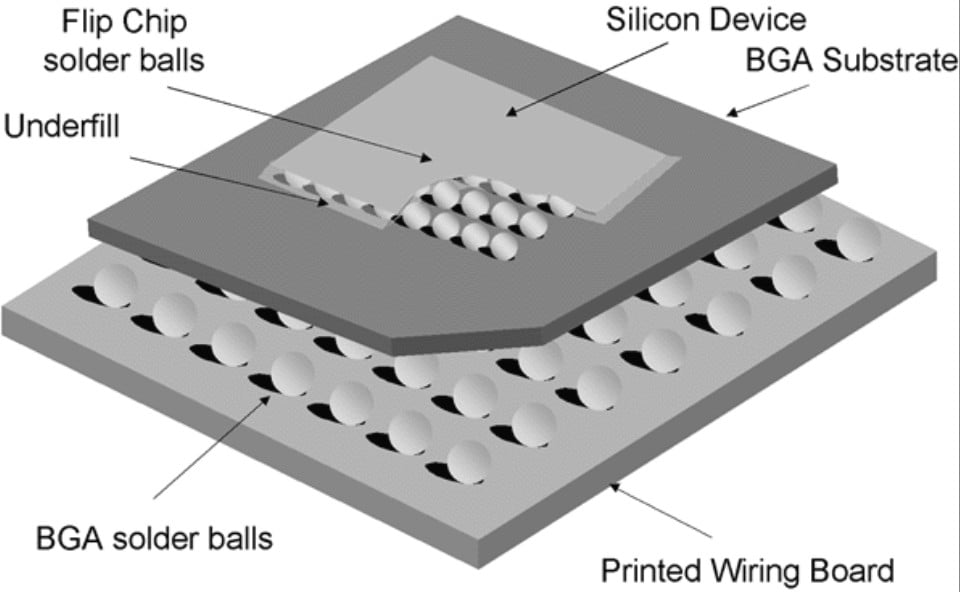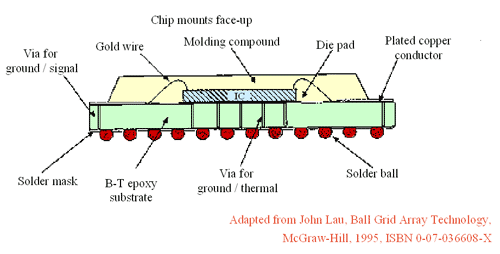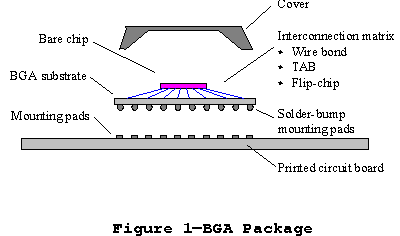A BGA (Ball Grid Array) substrate is a type of substrate used in BGA packaging, widely applied in high-density, high-performance electronics. It connects the chip to the circuit board through solder balls arranged on the bottom, offering excellent heat dissipation and reliability, ideal for miniaturized designs. Common materials for BGA substrates include BT resin and ABF, which support high-frequency, high-speed signal transmission.
We are a professional Flip-chip BGA substrate manufacturer. We can produce various types of BGA/IC substrates, Ranging from 2 layers to 26 layers, and using ABF materials, Glass materials, Ceramic materials, BT materials, high-frequency materials, etc. Fast delivery, stable quality and reasonable price. If you have any design or production detail questions, you can contact us by email at any time and we are always ready to offer assistance. please send email to : PCB@ALCANTAPCB.COM
| Category | Customization | Detailed Options and Description |
|---|---|---|
| Material Information | Substrate Type | Glass substrate, ABF substrate, BT resin, ceramics, aluminum substrate, copper substrate, PI (polyimide), high thermal conductivity composite materials; suitable for heat dissipation, high-temperature resistance, and high thermal conductivity. |
| Material Brands | Common brands: Ajinomoto Build-up Film, Mitsubishi, Rogers, Isola, AGC, Hitachi, other international or domestic materials. | |
| Dielectric Properties | Dielectric constant (Dk): 2.2~10; Dissipation factor (Df): below 0.001, better high-frequency signal integrity. | |
| Size and Structure | Layers | Double-layer, multi-layer (e.g., FCBGA substrate with 26 layers); supports customization of higher layer counts. |
| Size Range | Customizable dimensions, common range: 10mm×10mm to 500mm×500mm; supports ultra-small or large substrate customization. | |
| Thickness | Overall substrate thickness: 0.1mm~3mm; supports ultra-thin designs or enhanced structures; interlayer thickness can be customized. | |
| Conductive Layer Info | Conductor Material | Copper foil (standard/thickened), aluminum foil, or nickel foil (for special purposes); copper thickness range: 1/3oz~3oz, supports higher thickness customization. |
| Surface Roughness | Smooth or rough surface treatment (e.g., micro-etching), enhancing the adhesion of the conductive layer to the substrate. | |
| Fine Line Capability | Minimum line width/spacing: 5μm/5μm to 50μm/50μm, meeting high-density interconnection or precision packaging requirements. | |
| Hole Processing Info | Hole Type | Through-hole, blind hole, buried hole, micro-hole; supports custom micro-hole processing (e.g., laser drilling). |
| Minimum Hole Diameter | Laser hole diameter: 20μm~100μm; mechanical drilling supports larger diameters. | |
| Hole Wall Metallization | Copper plating thickness ≥10μm, supports higher thickness requirements for reliability and durability. | |
| Surface & Welding | Surface Treatment | Nickel-gold plating (ENEPIG), chemical gold deposition, SOP; suitable for various soldering techniques (e.g., SMT, flip-chip). |
| Welding | Wire Bonding, Solder Bump. | |
| Thermal Management | Thermal Path Optimization | Optimized heat management through thermal layers/metal substrates; supports custom heat dissipation holes or slot designs. |
| Thermal Coating/Additional Layers | Optional thermally conductive insulating coatings (e.g., AlN coating) to enhance thermal performance and durability. | |
| Impedance & Signal | Impedance Control | Supports single-ended impedance (e.g., 50Ω) or differential impedance (e.g., 90Ω) with a tolerance of ±5%. |
| High-Frequency Transmission | Suitable for GHz-level signal transmission, low-loss design (Df below 0.001), enhancing signal integrity. | |
| Mechanical Properties | Strength and Stability | High bending strength (≥200N/mm²), dimensional stability (warpage ≤0.5%). |
| Special Structures | Supports complex designs such as grooves, chamfers, or cutouts for special assembly requirements. | |
| Appearance & Marking | Surface Marking | Supports laser marking or silk screen printing (logo, model, QR code); high-contrast character design. |
| Testing & Certification | Electrical Performance Testing | Comprehensive electrical testing (short circuit, open circuit); functional testing (e.g., high-frequency signal integrity). |
| Environmental & Safety Certification | Compliant with RoHS, REACH; UL-certified (e.g., 94V-0 flame retardant grade). |
A BGA substrate (Ball Grid Array substrate) is a type of packaging material that provides the structural base and conductive pathways for BGA packages, one of the most commonly used types of integrated circuit packaging in modern electronics. The BGA substrate serves as a platform that holds the IC chip in place and electrically connects it to a printed circuit board (PCB) through an array of small, spherical solder balls arranged in a grid on the underside of the package. This grid-based connection method, distinct to BGA packaging, supports higher density and more efficient layouts compared to other packaging types like Pin Grid Array (PGA) or Land Grid Array (LGA).
Basic Structure of a BGA Substrate
The basic structure of a BGA substrate consists of multiple layers of conductive materials (often copper) laminated between insulating layers, usually made of materials like BT resin or ABF (Ajinomoto Build-up Film). The conductive layers contain circuits and vias (vertical interconnect accesses) that connect the IC’s I/O points to the solder balls, allowing communication with the external PCB. BGA substrates also incorporate specialized coatings and surface finishes to enhance solderability, protect against oxidation, and ensure long-term reliability.
The multi-layered structure of BGA substrates enables complex routing and higher interconnect density, essential for modern ICs that have thousands of I/O points. Furthermore, BGA substrates are designed to accommodate the specific needs of the chip they house, including considerations for signal integrity, heat dissipation, and mechanical robustness.
Role of BGA Substrates in BGA Packaging
In BGA packaging, the substrate plays several critical roles:
- Mechanical Support: It securely holds the IC in place, protecting it from physical damage during handling and assembly.
- Electrical Connectivity: It routes electrical signals from the IC’s I/O points to the solder balls, allowing for high-speed data transfer between the chip and the PCB.
- Thermal Management: It assists in dissipating heat away from the IC, an increasingly vital function given the high power density of modern electronic components.
- Reliability Assurance: The substrate’s materials and coatings enhance the package’s resistance to thermal and mechanical stress, reducing failure rates and ensuring a longer lifecycle.
Importance in Miniaturization of Electronic Components
The importance of BGA substrates in electronic miniaturization cannot be overstated. As consumer devices and industrial electronics demand more powerful yet compact components, BGA packaging, enabled by BGA substrates, has become essential for achieving these requirements. The dense, grid-based solder ball layout allows for significantly reduced package sizes, enabling more components to be integrated within a smaller footprint. Additionally, the structural stability and high thermal conductivity of BGA substrates support the trend toward miniaturization without compromising performance or reliability.
The BGA substrate is a foundational element in BGA packaging, designed to address the need for smaller, more efficient, and reliable IC connections. Its multi-functional design directly supports advancements in electronic miniaturization, making it indispensable in today’s fast-evolving electronics landscape.
BGA substrates are constructed from advanced materials that support the high-density interconnects and performance demands of modern integrated circuits. These materials are selected based on their ability to meet stringent requirements for electrical conductivity, thermal management, mechanical strength, and durability. The two most commonly used materials in BGA substrates are BT (Bismaleimide-Triazine) resin and ABF (Ajinomoto Build-up Film), each offering unique characteristics that cater to specific types of electronic applications.
Overview of Common Materials
- BT Resin: BT resin is a high-performance thermosetting polymer known for its excellent thermal stability, mechanical strength, and low moisture absorption. It is widely used in BGA substrates due to its ability to withstand the heat and mechanical stress of the soldering process. BT resin substrates have a relatively high glass transition temperature (Tg), typically between 170–210°C, which allows them to maintain structural stability and resist deformation under high temperatures. These properties make BT resin ideal for applications where heat resistance and mechanical durability are essential, such as in automotive electronics, telecommunications equipment, and certain high-power computing applications.
- ABF (Ajinomoto Build-up Film): ABF is a specialized epoxy-based material developed by Ajinomoto specifically for use in high-density packaging applications. ABF substrates are characterized by their high electrical insulation properties and fine build-up layer capabilities, making them suitable for packaging small, high-performance ICs. ABF’s fine patterning capabilities enable it to support narrower line spacing and higher wiring density, which is essential in advanced applications like CPUs, GPUs, and other processors in mobile devices and high-performance computing systems. The flexibility and excellent electrical performance of ABF make it ideal for high-frequency and high-speed signal transmission, while its moderate Tg (around 150–160°C) ensures it can withstand standard reflow processes without excessive warping.
Impact of Material Choice on Design
The choice between BT resin and ABF in BGA substrate design directly affects several aspects of the substrate’s performance and suitability for various applications. Here’s how:
- Design Requirements: The choice of material impacts the minimum line width and spacing achievable on the substrate, which is crucial for high-density designs. ABF’s fine build-up capabilities allow for narrower lines and spaces, supporting higher I/O counts and more complex routing in smaller packages. In contrast, BT resin is better suited to less complex designs with wider routing requirements, making it a good choice for applications where ultra-high density is not critical.
- Thermal Performance: Thermal management is a significant concern in electronic packaging, as excessive heat can damage ICs and reduce device lifespan. BT resin’s higher glass transition temperature and thermal stability make it better suited for high-heat applications, providing greater structural integrity under prolonged exposure to heat. While ABF also offers good thermal properties, it is optimized for performance in compact designs and less extreme thermal environments, making it popular for consumer electronics and mobile applications.
- Mechanical Strength: Mechanical durability is essential to protect the substrate and IC during the soldering process and in daily operational environments. BT resin offers excellent mechanical strength, making it resilient to stresses during reflow soldering, vibration, and physical impacts. ABF, although slightly less robust in mechanical strength compared to BT, is sufficiently durable for compact, lightweight devices. This slight trade-off in mechanical durability is often acceptable in devices where weight and size take precedence, as seen in mobile and handheld electronic devices.
The choice between BT resin and ABF for BGA substrates depends on the specific requirements of the application. BT resin substrates are favored in high-power, thermally intensive applications that require robust mechanical strength, while ABF substrates excel in applications demanding high-density, fine-line designs and are optimal for high-frequency, high-speed signal transmission. By selecting the appropriate material, engineers can optimize BGA substrates for their intended applications, balancing factors like thermal management, structural durability, and electrical performance to meet the demands of today’s complex electronic devices.
The design of BGA (Ball Grid Array) substrates involves meticulous planning to accommodate the complex requirements of high-density interconnects in modern ICs. As BGA substrates must enable reliable signal transmission, heat dissipation, and mechanical stability, several design principles are crucial, from understanding key metrics like ball pitch and layer count to utilizing automated design tools that improve precision and efficiency.
Design Rules and Key Considerations
- Ball Pitch: The ball pitch in BGA substrates refers to the distance between the centers of adjacent solder balls. As ICs become smaller and integrate more functions, the demand for fine-pitch BGA substrates increases, necessitating tighter spacing between solder balls. A smaller ball pitch allows for more connections within a given area, supporting higher I/O counts and facilitating the miniaturization of electronic components. However, finer ball pitches require advanced materials and precision in manufacturing to avoid issues like short-circuiting or signal interference.
- Layer Count: The number of layers in a BGA substrate directly influences its ability to route signals, manage power distribution, and maintain mechanical stability. Typically, high-performance applications require multi-layer substrates, with each layer providing dedicated paths for signals, power, and ground planes. More layers enhance the routing capability and signal integrity, but they also increase the substrate’s thickness and manufacturing complexity. Therefore, designers must balance the layer count based on the application’s performance requirements and physical constraints.
- Routing: Routing is the process of creating conductive paths on the BGA substrate to connect the chip’s I/O points to the solder balls and ultimately to the PCB. Given the limited space and dense grid layout, routing in BGA substrates requires precise design strategies to avoid cross-talk, minimize signal loss, and ensure thermal stability. Key routing techniques include using differential pairs for high-speed signals, incorporating shielding layers to reduce electromagnetic interference (EMI), and careful placement of vias to avoid congestion and maintain signal integrity. Optimized routing also considers current paths to minimize power losses and prevent hotspots on the substrate.
Importance of Automated Design
Automated design tools play an increasingly vital role in BGA substrate design due to the complexity and precision required. Automated design software assists engineers in quickly creating and verifying intricate layouts that meet design specifications, providing several critical benefits:
- Enhanced Accuracy: Automated tools reduce the risk of human error, ensuring that all design parameters, including ball pitch, via placements, and routing constraints, are consistently adhered to. This accuracy is essential in BGA substrates, where even minor deviations can lead to issues like impedance mismatches or signal interference.
- Increased Efficiency: The complexity of BGA designs would be extremely time-consuming to handle manually. Automated tools expedite the design process by offering features like autorouting, which finds the optimal paths for signal connections based on predefined design rules. This enables designers to create more complex layouts in shorter timeframes, speeding up the overall product development cycle.
- Design Optimization and Simulation: Many automated design tools offer built-in simulation features, allowing designers to analyze signal integrity, thermal behavior, and mechanical stability before physical prototyping. This capability is crucial for BGA substrates, as it helps engineers preemptively address potential routing or thermal issues and optimize the design for performance and reliability.
Routing Challenges in BGA Substrates
The dense grid layout and limited space in BGA substrates present unique routing challenges that can impact signal quality, thermal management, and manufacturability. Below are some common routing challenges and potential solutions:
- Space Constraints and Via Congestion: The limited real estate on a BGA substrate, combined with high I/O counts, often leads to congestion in via placements. High via density can cause physical interference, making it difficult to maintain clear signal paths and risking signal interference. Solutions include using microvias, which occupy less space and allow more connections within the same area, and strategically designing via patterns to minimize signal overlap.
- Signal Integrity: Signal integrity is critical, especially for high-frequency signals in applications like mobile devices and computing. High-density routing increases the risk of cross-talk (signal interference between adjacent lines) and impedance mismatches, both of which can degrade signal quality. To address these issues, designers can implement shielding layers or ground planes between signal layers and use differential routing to maintain signal integrity in high-speed connections.
- Thermal Management: With high-density connections and high-power ICs, BGA substrates face thermal challenges that can lead to overheating and reliability issues. Proper routing can help distribute current more evenly, reducing hotspots. Additionally, designers may incorporate thermal vias or thermal pads to dissipate heat more effectively, particularly in power-intensive applications.
- Manufacturing Constraints: The fine-pitch routing and dense via placements on BGA substrates demand precise manufacturing processes. In certain cases, design choices may need to be modified to accommodate fabrication limitations. For instance, reducing via density in non-critical areas or simplifying layer counts can make manufacturing more feasible without compromising performance.
The design of BGA substrates requires careful consideration of key factors such as ball pitch, layer count, and routing strategies. Automated design tools enhance precision and efficiency, allowing engineers to create complex and high-performance BGA substrates. By addressing common routing challenges through innovative techniques like differential routing, microvias, and thermal management, designers can ensure that BGA substrates meet the rigorous demands of modern electronic applications.
BGA(球栅阵列)基板的制造工艺是一项复杂且多步骤的操作,结合了各种技术,为现代电子设备提供高性能互连解决方案。该工艺包括几个关键阶段,例如材料准备、蚀刻、电镀、层压和质量测试。每个阶段在确保基板满足严格的性能、可靠性和可制造性要求方面都发挥着至关重要的作用。
制造过程概述
- 材料准备:制造过程从选择和准备基板材料开始,基板材料通常由介电层(例如 BT 树脂或 ABF)组成。根据设计规格将这些材料切割成适当的尺寸和厚度。
- 层压:准备完毕后,将介电层层压在一起,形成多层基板。此过程涉及施加热量和压力以粘合各层,这有助于实现所需的厚度和结构完整性。层压过程对于确保各层之间的均匀性和附着力至关重要,这会影响基板的整体性能。
- 光刻胶应用:层压后,将光刻胶层涂在基板表面。此感光材料将进行曝光和显影,以创建图案,供后续蚀刻和电镀工艺使用。
- 蚀刻:蚀刻工艺会根据光刻胶定义的图案从基板表面去除不需要的铜。这通常通过化学蚀刻工艺实现,其中将基板浸入蚀刻剂溶液中,蚀刻剂溶液会选择性地去除铜,从而为信号通路创建所需的电路。
- 电镀:蚀刻后,采用电镀工艺将一层导电金属(通常是铜)沉积到基板的裸露区域上。该工艺可能涉及电镀和化学镀技术,允许在需要额外厚度的区域堆积金属,以提高导电性和连接强度。此步骤对于形成焊球附着的焊盘至关重要。
- 通孔形成:在基板上形成通孔,以提供各层之间的垂直互连。这是通过钻孔实现的,然后用导电材料镀通孔壁,确保基板不同层之间的可靠连接。
- 表面处理:电镀后,进行表面处理以提高可焊性并防止氧化。常见的表面处理包括浸金、化学镀镍或有机可焊性保护剂 (OSP)。
- 测试和检查:最后,制造的 BGA 基板要经过严格的测试和检查,以验证其完整性、导电性和性能。这可能包括电气测试、热循环测试和目视检查,以确保符合行业标准和规范。
关键技术:蚀刻技术的应用
蚀刻技术是 BGA 基板制造中采用的先进技术之一。该方法涉及在初始电镀工艺之后选择性地去除铜垫下方的一部分介电材料。以下是蚀刻技术至关重要的原因及其优点:
- 增强导电性:通过蚀刻介电层,铜焊盘可以更靠近焊球。距离的缩短提高了焊盘和焊点之间的电导性,从而提高了信号完整性和性能。增强导电性对于高速和高频应用尤其重要,因为信号损失会严重影响设备的功能。
- 提高机械稳定性:蚀刻回技术还可以帮助提高焊点的机械稳定性。通过使焊料更好地流动并填充焊球和铜焊盘之间的间隙,该技术降低了焊料空洞或焊点薄弱等缺陷的可能性。由此产生的更牢固的连接有助于提高 BGA 封装的可靠性,尤其是在热循环和机械应力下。
- 量身定制的设计灵活性:使用蚀刻技术,设计师可以创建更紧凑、更密集的 BGA 布局。通过改进对焊盘和球几何形状的控制,工程师可以优化设计以实现更高的 I/O 数量,而不会影响性能或可制造性。
- 热管理:蚀刻工艺也有助于散热。通过优化焊盘的表面积并改善焊料与铜之间的接触,可以增强热传递,从而降低高功率应用中过热的风险。这一方面至关重要,因为电子元件的尺寸不断缩小,而其性能要求不断提高。
BGA 基板的制造过程是各种步骤的复杂相互作用,最终产生高性能电子元件。蚀刻技术等技术在增强 BGA 基板的电气和机械性能方面发挥着至关重要的作用,使其适合当代电子应用的需求。通过利用先进的制造方法,工程师可以开发出有利于小型化、提高可靠性并在各种设备中保持高性能水平的 BGA 基板。





